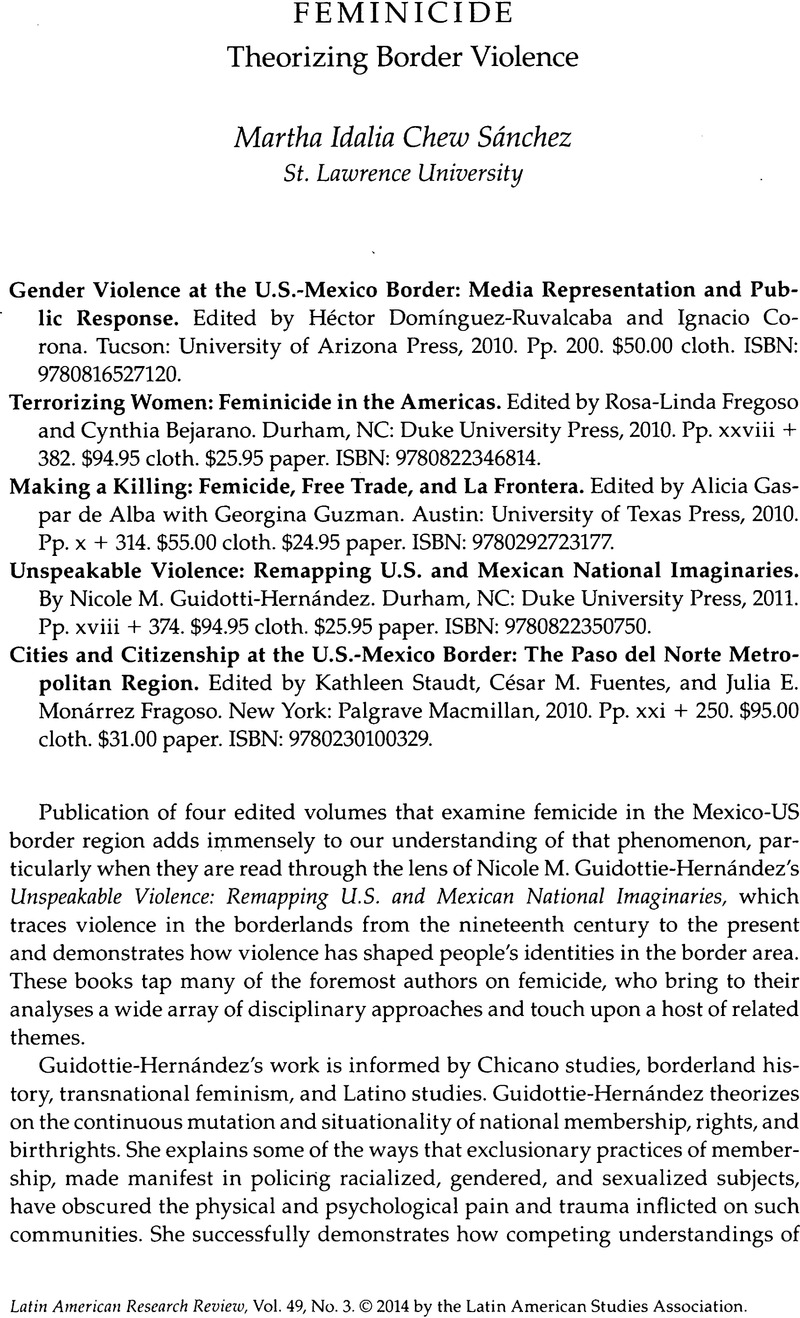Article contents
Feminicide: Theorizing Border Violence
Review products
Published online by Cambridge University Press: 05 September 2022
Abstract

- Type
- Review Essays
- Information
- Copyright
- Copyright © 2014 by the University of Texas Press
References
1. The term feminicide has been employed throughout the remainder of this review essay to reflect the author's concurrence with this comprehensive approach, though the other works under review use the term femicide.
2. Matthew S. Jenner, “International Drug Trafficking: A Global Problem with a Domestic Solution,” Indiana Journal of Global Legal Studies 18, no. 2 (2011): 901-927.
3. In Spanish, colonia means a community or neighborhood. However, the term has been appropriated by the state of Texas to refer to a Mexican-American residential area along the Texas-Mexico border. Most colonias lack some of the most basic living infrastructure such as potable water and sewer systems, electricity, paved roads, and safe and sanitary housing.
- 4
- Cited by


